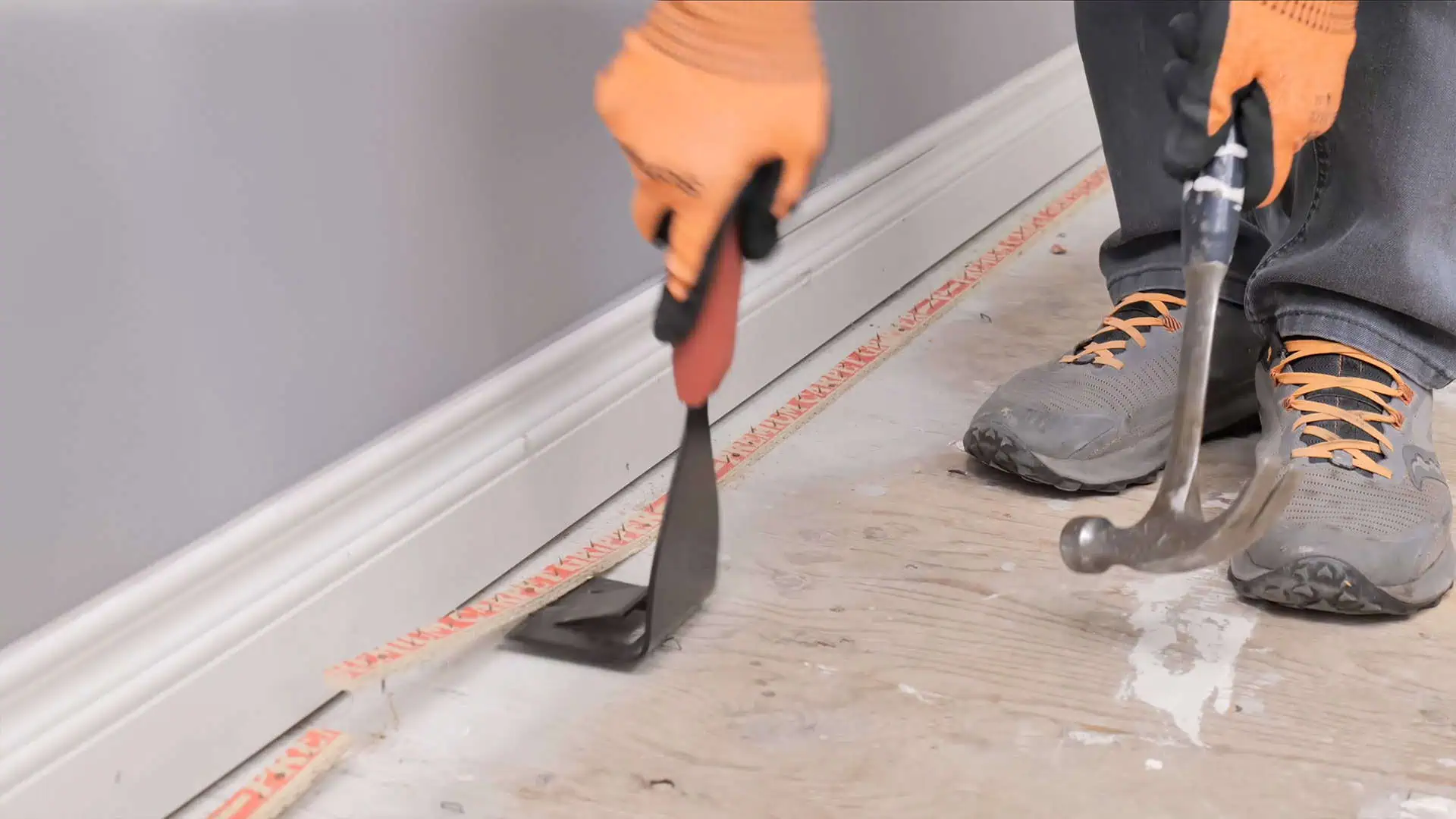Carpet gripper rods are the thin, spiked strips that hold your carpet securely in place. Not only that, gripper plays an important part in stopping your carpet shifting and becoming a trip hazard, and helps it last longer.
Sometimes gripper rods need replacing – usually because you’re laying new flooring, or because they’ve become damaged or worn over time. Either way, they’re sharp – so you need to remove them properly.
In this guide, we’ll cover the telltale signs you need new gripper, how to pull the rods up safely, and the best ways to dispose of them.
Tools you will need
Here’s the equipment you’ll need to safely remove carpet gripper:
- Knee pads
- Gloves
- Dust mask
- Pliers
- Prybar/flat-head screwdriver
How can you tell it’s time to replace your carpet gripper?
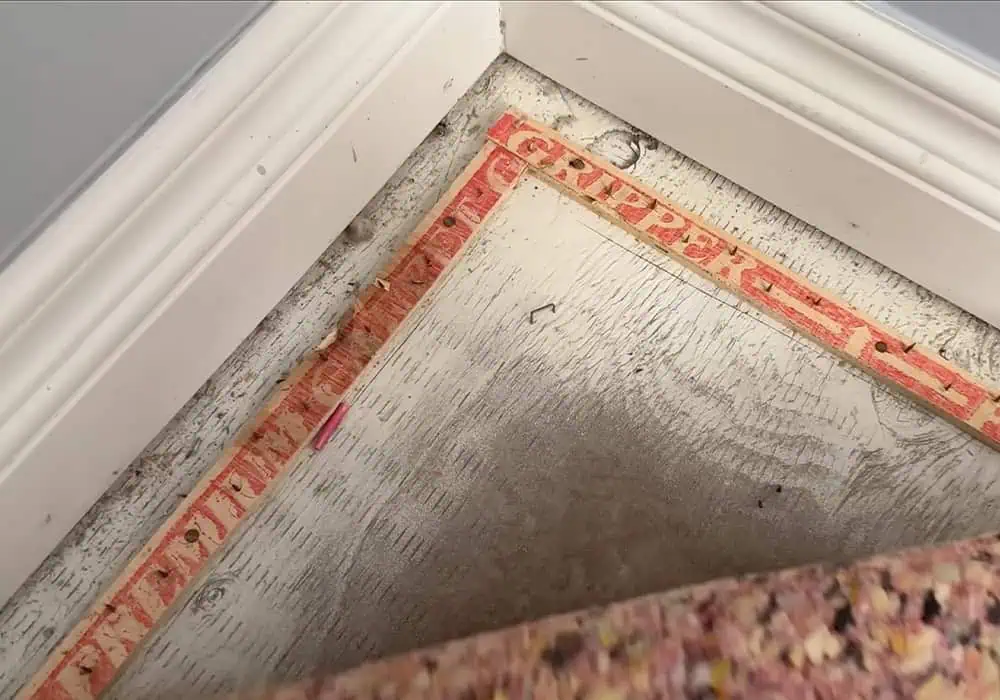
Carpet gripper rods can bend or break due to constant foot traffic, exposure to moisture or age. Here are the main signs – above and below the carpet – that it’s time to replace your gripper:
- Your carpet shifts, bunches or feels loose underfoot.
- You hear weird cracking or popping noises when walking on the carpet.
- The gripper teeth are bent or broken – causing your carpet to wrinkle or lift at the edges.
- There are noticeable cracks or warping in the gripper.
- There’s obvious rust or corrosion on the gripper – a telltale sign of water damage.
If you’re experiencing any of the above, it means your gripper is no longer performing, so we recommend removing it and starting again.
Why you should you replace your gripper when you fit a new carpet
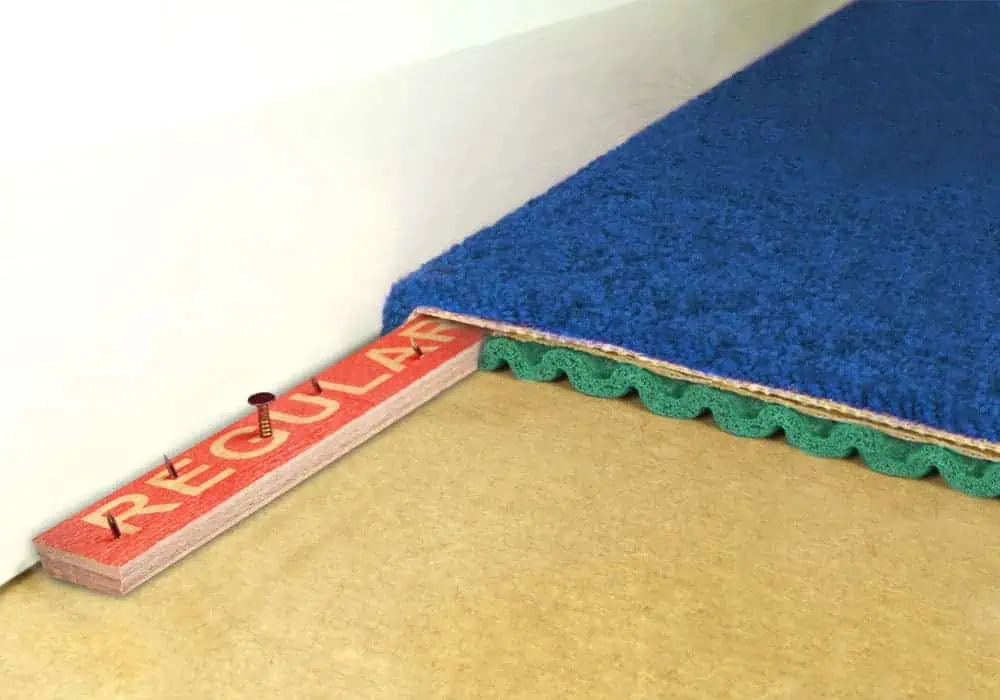
Replacing the gripper rods when you’re installing a new carpet might feel like an unnecessary expense, but you really should spend the extra cash – here’s why:
- New gripper rods give your carpet a stable foundation, helping it stay in place and reducing the risk of movement, wrinkling and trip accidents.
- A worn or damaged gripper won’t hold the carpet properly, making installation much harder. Fresh rods guarantee optimal grip for your new carpet.
- Laying new carpet over old or compromised gripper rods can lead to problems down the line, like lifting edges or uneven wear – which will cost you more in the long run when you have to replace your rods and fork out for another carpet.
- New gripper helps extend the life of your carpet by offering proper support and reducing stress on the carpet fibres.
How to remove carpet gripper
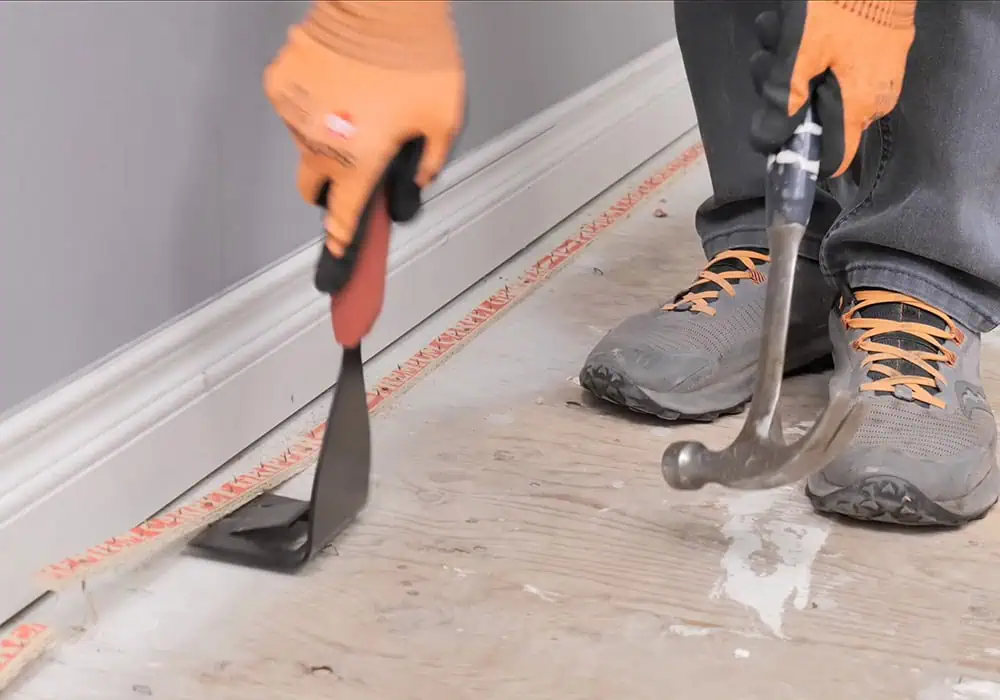
Now you know the reasons why you need to replace your gripper rods, let’s look at how to take them up safely in three simple steps:
Step 1. Safety first
Goggles, gloves, knee pads and a dust mask might sound a bit extreme, but you’ll be kneeling a lot, coming into contact with sharp spikes and creating a lot of dust and debris—so it’s wise to protect yourself.
Step 2. Clear the area
Remove furniture and other obstacles before you lift your flooring to ensure you have plenty of room to work in.
Step 3. Lift the gripper
- Start by inserting your pry bar or flathead screwdriver under the edge of the gripper and gently tapping it with your hammer to loosen it.
- Carefully work the pry bar under the gripper and lift it up bit by bit, taking extra care not to damage your subfloor.
- Use your pliers to remove any nails or staples left in the floor.
- Repeat the process for the rest of the rods and repair any subfloor damage before fitting your new gripper and flooring.
- Finally, make sure you get rid of the old gripper and nails carefully and responsibly (see below).
How to dispose of old carpet gripper
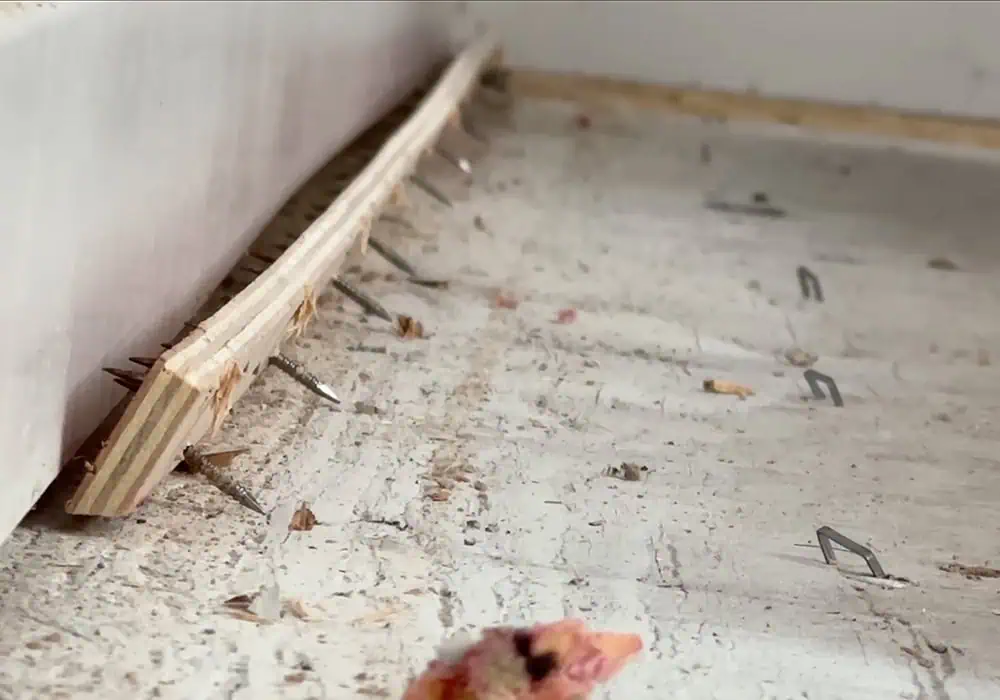
We know it’s quicker and easier to throw your old gripper in the general waste bin, but there are safer, planet-friendly options.
The most responsible way is to take them to your local recycling centre—they might even have separate sections for construction waste. Separating the wood from the metal before you set off can make your trip quicker.
Alternatively, you can take it all to your local tip—just check they accept construction debris first.
TOP TIP: If your rods are still in reasonable condition, they could come in handy for future DIY projects.
Bye bye, gripper
Now you know how to spot the signs that you need new carpet gripper and why it’s important to replace it before installing new flooring, follow this simple guide for a smooth and safe removal.

